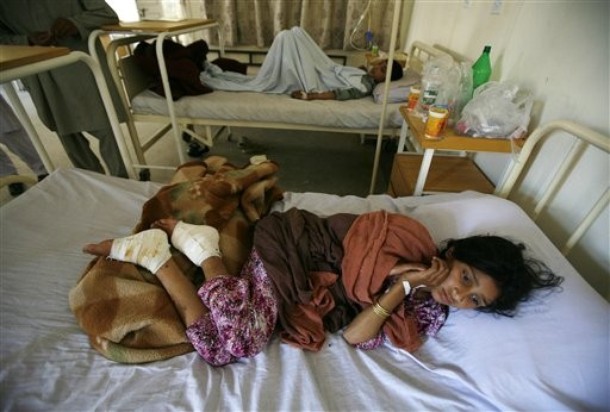Measuring Civilian Deaths in Pakistan

In a new report, Anthony Cordesman argues that we shouldn't necessarily trust the numbers we're hearing from David Kilcullen on the number of Pakistani civilians killed by U.S. drone attacks:
Both casualty estimates and day-to-day new reports are also affected by the fact that casualty impact of air operations is systematically being exaggerated by Taliban and jihadist claims that fighters are innocent civilians, growing Taliban and Jihadist use of exaggerated casualty estimates as propaganda weapons, manipulation of bodies and grave sites (some of which may be empty), and the growing use of civilians as human shields. Bodies are buried almost immediately, fighters and other dead can be called casualties, after-action investigations are often impossible in insecure areas, and truth that comes too late is truth unheard. There often is no practical way to establish the facts, and a very real inability to distinguish who really is a fighter and who is not.
He then goes on to argue that regardless, airstrikes have a limited utility in the kind of war raging in Pakistan:
...no limits to the use of air power or improvements in its use can make up for a lack of the resources needed to win, inadequate ground troops, and for creating secure areas and winning the support of the local population. U.S. and NATO/ISAF commanders have repeatedly warned that there is no military path to victory in Afghanistan, and it is clear from the conduct of Pakistani force to date, that this is equally true in Pakistan.Moreover, the same public opinion polls in Afghanistan that show such growing anger against air strikes in general reveal a pattern that has been clear in Iraq and virtually every counterinsurgency conflict where the insurgents have been defeated. Civilians see a very different reality when tactical clashes defeat the insurgents and are followed by forces that stay, bring lasting security, and which then are followed by a civil presence that brings government services and some degree of economic security.
If this is indeed true, and it's certainly the prevailing conventional wisdom, then it just underscores how little the U.S. can do in Pakistan without the full scale cooperation of the Pakistani government. They'll be the ones clearing, holding and building. Even with significant American assistance, if the Pakistanis have no will, there doesn't seem to be a way.
--
Photo Credit: AP Photo



